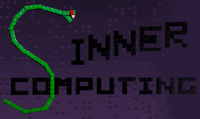AN/SPS-52C - Long Range 3D Air Search Radar |
Back to the Main Index
FRESCAN Radar History
SPS-52C was designed by Hughes, the developers of the FRESCAN (Frequency Scan) 3D radar concept. This is where a radar steers a pencil beam in elevation by varying the frequency of the transmitted RF. The antenna of a FRESCAN radar is a stack of slotted waveguides, specifically designed to take advantage of the fact that the direction of the beam out of a slotted waveguide depends on the frequency. This is known as the Squint Angle effect. | |  |
| |
SPS-26 Array
|  | | The first FRESCAN radar was the SPS-26, first demonstrated in August 1953. It's array was very different from other FRESCAN radars in that it was cylindrical rather than flat. It proved to be a successful test bed, but never saw active service as it's maximum range was only about 90n mi, and it also was considered too unreliable. It was developed into the successful SPS-39 radar in January 1960. It initially used the array from the SPS-26 and achieved greater reliability and a longer range of 160 n mi. In 1963 most SPS-39s were upgraded to the Series-III standard which featured a new flat array, a new transmitter and as well as receiver modifications. This almost doubled the range and reliability of the radar, and also reduced picture noise. A version of SPS-39 which feature improved combat system integration was designated SPS-42. |
SPS-39 on USS Galvestron testing an experimental wider array
| |
| The radar was redesignated SPS-52 when the stabilisation was made digital, but the radar didn't become fully digital until the SPS-52C version in 1977. This version was the last upgrade and featured substantial improvements, including a range of over 240 n mi. The most obvious external difference was the level array. All previous versions had the array tilted 15 degrees to compensate for rotation during the ELSCAN (Elevation Scan). Due to the increased computing power offered by the UYK-20 computer that the SPS-52C had, this was handled digitally. SPS-52C was also substantially more reliable due to a mostly solid state construction, and featured excellent built in test functions. | |  |
| |
SPA-72B - the SPS-52C Array
|  | | SPS-52C worked especially well on the very balanced Charles F. Adams class of destroyers. These have all been de-commissioned, the last served with the Hellenic Navy (Greece) until 2004. The last Australian SPS-52C stopped "Turning & Burning" on the Perth Class (a modified Charles F. Adams) HMAS Brisbane in 2001. Sadly, at this stage only one of this class has been preserved, D186 Mölders of the Deutsche Marine.
The last US ships to carry SPS-52C were of the Tarawa class, but reports indicate that these were replaced with SPS-48E, and furthermore, the class is being decommissioned. Japan is still using Hatakaze and Tachikaze destroyers, both of which were reported to be fitted with SPS-52C. However it is hard to find a good source to confirm RADAR fits. More focus is given to the weapons, not the sensors, when reporting ship statistics. Thus any information would be appreciated! |
HMAS Brisbane at speed in 1998
| |
|
| |
| References: |
| Naval Radar |
Norman Friedman |
| Brain |
Andrew J Glina |
| |
|
|
|
|
| Last updated 5 Jun 09 |
|
|
 Our Sin is to reject bloated software!
Our Sin is to reject bloated software!


